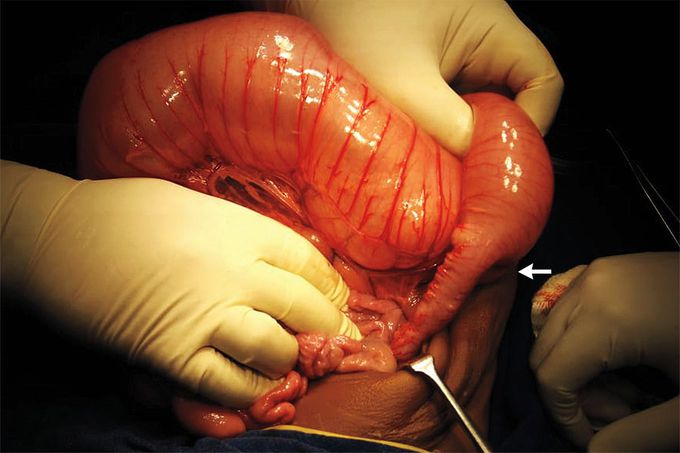


Transition Zone in Hirschsprung’s Disease
A 3-day-old male infant presented to the hospital with vomiting, an inability to pass stools, abdominal distention, and an inability to breast-feed. The infant appeared unwell. Physical examination was notable for a distended abdomen that was resonant to percussion; there were no audible bowel sounds. A radiograph of the abdomen showed dilated colonic loops that were consistent with a distal intestinal obstruction, and an enema performed with the use of water-soluble contrast material revealed a transition zone. In this hospital, bedside rectal suction biopsy was not available; therefore, exploratory laparotomy was performed. During the laparotomy, a transition zone was seen in the sigmoid colon (arrow), and short-segment Hirschsprung’s disease was suspected. Full-thickness biopsy samples of the distal, narrowed colon were obtained; on histologic examination, no ganglion cells were visible, a finding that confirmed the diagnosis. To decompress the colon, a loop colostomy was constructed. The infant did well postoperatively and was discharged 7 days after the surgery. A subsequent pull-through operation was performed. At follow-up 6 months after presentation, the infant remained well.

